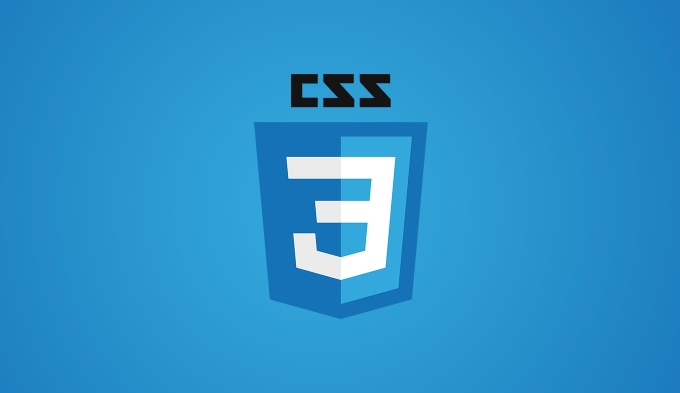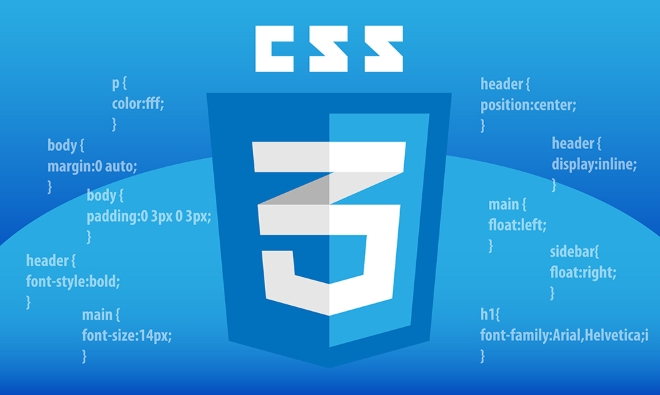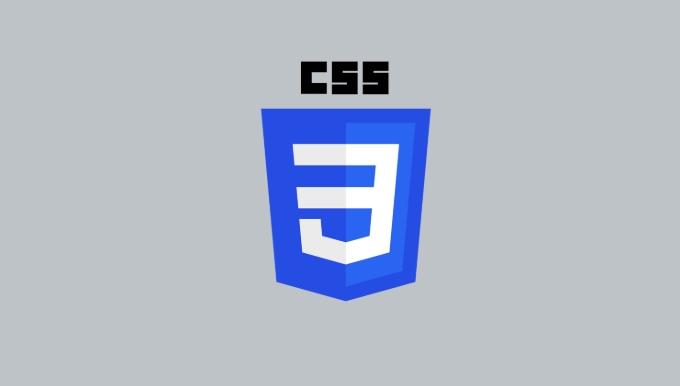To change the color of the image using CSS filter, it can be done by combining common filter functions. 1. grayscale() can grayscale(), which is often used in the "disabled" state, such as grayscale(100%); 2. sepia() can add retro tones, such as sepia(80%), which is often paired with saturate() or contrast(); 3. hue-rotate() can change the main tones, such as hue-rotate(90deg), which is suitable for adjusting the overall color distribution; 4. Multiple filters can be used in combination, such as sepia(70%) contrast(110%) brightness(95%), which achieves more complex effects, and multiple functions are separated by spaces, and the order does not affect the result.

It is actually not difficult to change the color of the picture using CSS filter. The key is to understand the combination of several commonly used filter functions. Let me directly talk about the key points: The filter attribute allows you to adjust the color, contrast, transparency and other visual effects of web page pictures through code without using image editing software .

Here are a few scenarios and methods you are most likely to use.
1. Use grayscale() to turn the picture into gray
This is one of the most common needs, such as if you want the image to look "disabled" or unify the style.

img {
filter: grayscale(100%);
}-
grayscale(100%)means complete grayscale, the smaller the value, the more color it retains. - This method will not affect the original transparency or contrast of the image.
Tips : You can combine the hover effect to restore the color of the picture when hovering, and enhance the sense of interaction.
img {
filter: grayscale(100%);
transition: filter 0.3s;
}
img:hover {
filter: grayscale(0%);
} 2. Use sepia() to add retro tones to the picture
Want the pictures to look like old photos? sepia() comes in handy.

img {
filter: sepia(80%);
}-
sepia(100%)is the thickest retro color, and the lower the value, the lighter the effect. - It is usually used with
saturate()orcontrast()to bring up a more natural effect.
3. Use hue-rotate() to change the main color of the picture
This function can rotate the hue of the picture, which is suitable for you to make the picture look a certain color overall, such as changing from blue to green.
img {
filter: hue-rotate(90deg);
}- The value of
hue-rotate()is angle, ranging from 0deg to 360deg. - When using it, you may need to try a few more values to find the most suitable color effect.
Note : This filter will not change the light and darkness of the picture, but will only affect the color distribution.
4. Use multiple filter functions in combination
The power of CSS filter is that you can use multiple filters at once.
For example, if you want the picture to turn tan into an old photo style, you can write it like this:
img {
filter: sepia(70%) contrast(110%) brightness(95%);
}Common combinations include:
-
grayscale brightness contrast: controls grayscale and light and dark contrast -
hue-rotate saturate: adjusts hue and saturation -
brightness opacity: creates a "translucent light" effect
Key points : Multiple filters are separated by spaces, and the order does not affect the final effect (but it is recommended to be in logical order when writing).
Basically that's it. Although CSS filter cannot replace professional image processing tools, it is already flexible enough for web design. If you use it too much, you will find that it is actually a very practical visual adjustment tool.
The above is the detailed content of How to use CSS filter to change image colors?. For more information, please follow other related articles on the PHP Chinese website!

Hot AI Tools

Undress AI Tool
Undress images for free

Undresser.AI Undress
AI-powered app for creating realistic nude photos

AI Clothes Remover
Online AI tool for removing clothes from photos.

Clothoff.io
AI clothes remover

Video Face Swap
Swap faces in any video effortlessly with our completely free AI face swap tool!

Hot Article

Hot Tools

Notepad++7.3.1
Easy-to-use and free code editor

SublimeText3 Chinese version
Chinese version, very easy to use

Zend Studio 13.0.1
Powerful PHP integrated development environment

Dreamweaver CS6
Visual web development tools

SublimeText3 Mac version
God-level code editing software (SublimeText3)
 CSS tutorial for creating loading spinners and animations
Jul 07, 2025 am 12:07 AM
CSS tutorial for creating loading spinners and animations
Jul 07, 2025 am 12:07 AM
There are three ways to create a CSS loading rotator: 1. Use the basic rotator of borders to achieve simple animation through HTML and CSS; 2. Use a custom rotator of multiple points to achieve the jump effect through different delay times; 3. Add a rotator in the button and switch classes through JavaScript to display the loading status. Each approach emphasizes the importance of design details such as color, size, accessibility and performance optimization to enhance the user experience.
 Addressing CSS Browser Compatibility issues and prefixes
Jul 07, 2025 am 01:44 AM
Addressing CSS Browser Compatibility issues and prefixes
Jul 07, 2025 am 01:44 AM
To deal with CSS browser compatibility and prefix issues, you need to understand the differences in browser support and use vendor prefixes reasonably. 1. Understand common problems such as Flexbox and Grid support, position:sticky invalid, and animation performance is different; 2. Check CanIuse confirmation feature support status; 3. Correctly use -webkit-, -moz-, -ms-, -o- and other manufacturer prefixes; 4. It is recommended to use Autoprefixer to automatically add prefixes; 5. Install PostCSS and configure browserslist to specify the target browser; 6. Automatically handle compatibility during construction; 7. Modernizr detection features can be used for old projects; 8. No need to pursue consistency of all browsers,
 What is the difference between display: inline, display: block, and display: inline-block?
Jul 11, 2025 am 03:25 AM
What is the difference between display: inline, display: block, and display: inline-block?
Jul 11, 2025 am 03:25 AM
Themaindifferencesbetweendisplay:inline,block,andinline-blockinHTML/CSSarelayoutbehavior,spaceusage,andstylingcontrol.1.Inlineelementsflowwithtext,don’tstartonnewlines,ignorewidth/height,andonlyapplyhorizontalpadding/margins—idealforinlinetextstyling
 Creating custom shapes with css clip-path
Jul 09, 2025 am 01:29 AM
Creating custom shapes with css clip-path
Jul 09, 2025 am 01:29 AM
Use the clip-path attribute of CSS to crop elements into custom shapes, such as triangles, circular notches, polygons, etc., without relying on pictures or SVGs. Its advantages include: 1. Supports a variety of basic shapes such as circle, ellipse, polygon, etc.; 2. Responsive adjustment and adaptable to mobile terminals; 3. Easy to animation, and can be combined with hover or JavaScript to achieve dynamic effects; 4. It does not affect the layout flow, and only crops the display area. Common usages are such as circular clip-path:circle (50pxatcenter) and triangle clip-path:polygon (50%0%, 100 0%, 0 0%). Notice
 Styling visited links differently with CSS
Jul 11, 2025 am 03:26 AM
Styling visited links differently with CSS
Jul 11, 2025 am 03:26 AM
Setting the style of links you have visited can improve the user experience, especially in content-intensive websites to help users navigate better. 1. Use CSS's: visited pseudo-class to define the style of the visited link, such as color changes; 2. Note that the browser only allows modification of some attributes due to privacy restrictions; 3. The color selection should be coordinated with the overall style to avoid abruptness; 4. The mobile terminal may not display this effect, and it is recommended to combine it with other visual prompts such as icon auxiliary logos.
 How to create responsive images using CSS?
Jul 15, 2025 am 01:10 AM
How to create responsive images using CSS?
Jul 15, 2025 am 01:10 AM
To create responsive images using CSS, it can be mainly achieved through the following methods: 1. Use max-width:100% and height:auto to allow the image to adapt to the container width while maintaining the proportion; 2. Use HTML's srcset and sizes attributes to intelligently load the image sources adapted to different screens; 3. Use object-fit and object-position to control image cropping and focus display. Together, these methods ensure that the images are presented clearly and beautifully on different devices.
 Demystifying CSS Units: px, em, rem, vw, vh comparisons
Jul 08, 2025 am 02:16 AM
Demystifying CSS Units: px, em, rem, vw, vh comparisons
Jul 08, 2025 am 02:16 AM
The choice of CSS units depends on design requirements and responsive requirements. 1.px is used for fixed size, suitable for precise control but lack of elasticity; 2.em is a relative unit, which is easily caused by the influence of the parent element, while rem is more stable based on the root element and is suitable for global scaling; 3.vw/vh is based on the viewport size, suitable for responsive design, but attention should be paid to the performance under extreme screens; 4. When choosing, it should be determined based on whether responsive adjustments, element hierarchy relationships and viewport dependence. Reasonable use can improve layout flexibility and maintenance.
 What are common CSS browser inconsistencies?
Jul 26, 2025 am 07:04 AM
What are common CSS browser inconsistencies?
Jul 26, 2025 am 07:04 AM
Different browsers have differences in CSS parsing, resulting in inconsistent display effects, mainly including the default style difference, box model calculation method, Flexbox and Grid layout support level, and inconsistent behavior of certain CSS attributes. 1. The default style processing is inconsistent. The solution is to use CSSReset or Normalize.css to unify the initial style; 2. The box model calculation method of the old version of IE is different. It is recommended to use box-sizing:border-box in a unified manner; 3. Flexbox and Grid perform differently in edge cases or in old versions. More tests and use Autoprefixer; 4. Some CSS attribute behaviors are inconsistent. CanIuse must be consulted and downgraded.






